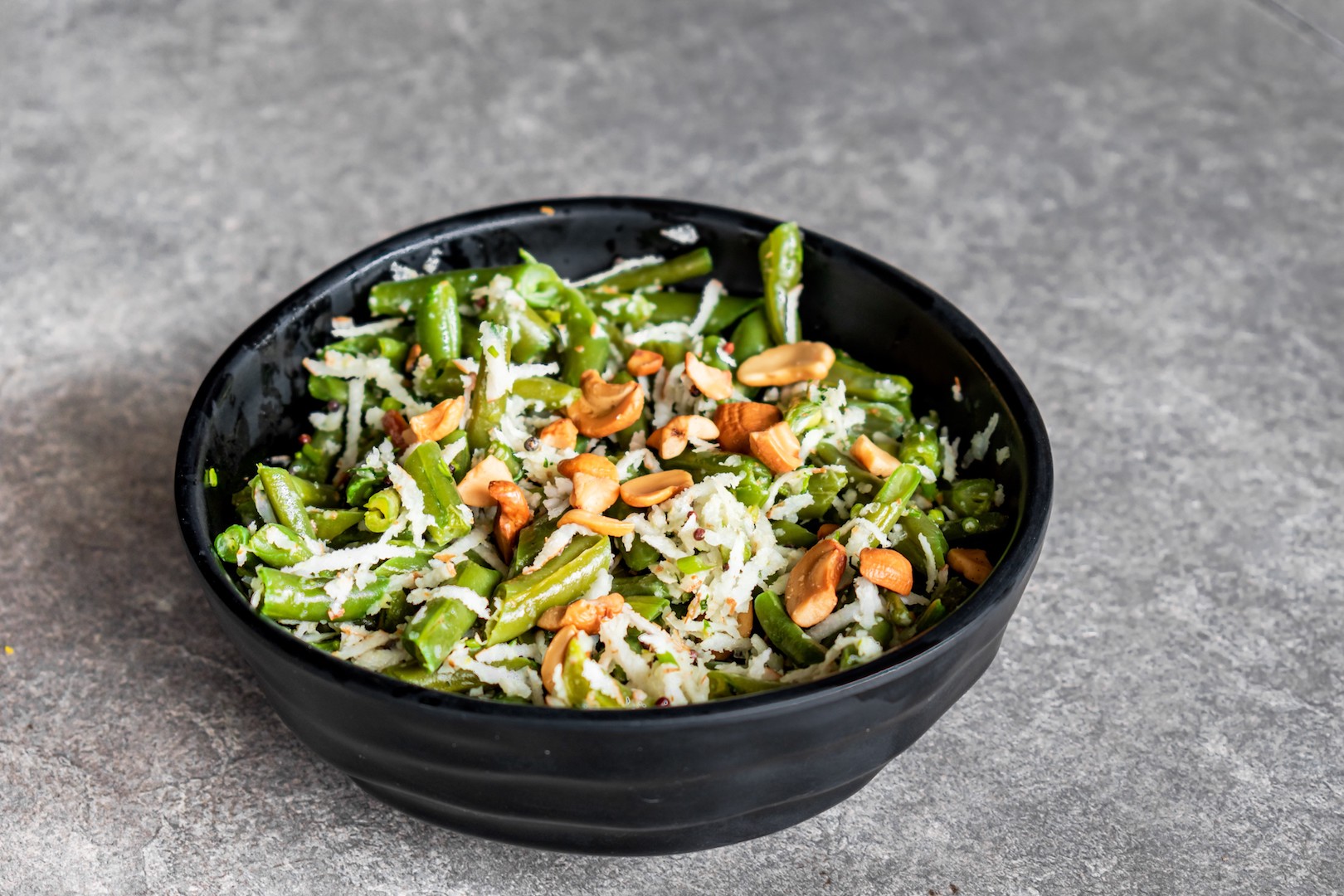I’m looking at you vegetable haters, and “beige-food only” eaters! It’s time to add some greenery to your plates, and some open-mindedness to your attitudes, because not all health food has to taste healthy — I promise!
Say it with me: “Not all health food has to taste health-y…”
With that said, you might be stuck in a state of utter disbelief for the time being, and that’s okay! In this case, eating really is believing, and put simply — you’re not going to know until you try.
So bookmark this article, break out the ol’ apron, and bring on the vegetables!
1. garlic, lemon, chili
Garlic, meet lemon, meet chili, meet the veggie skeptic reading this article! You four are going to get along great — I just know it — and let me tell you why.
When it comes to making delicious tasting food, it’s important to understand a few basic concepts of culinary science.
For starters, it helps to know that our brains largely respond to the flavour profile of 4 key elements: salt, acid, fat, and heat. These 4 elements, when combined, form the basis of all delectable dishes — even ones that rely on vegetables as a main ingredient.
In other words, get the balance right, and your food will come out tasting mouth-wateringly “well-rounded,” — aka, hitting all the sweet spots (ironically the one taste not mentioned here)!
So think of this first dish as your introduction to these elements. We’re using salt for…well…salt, lemon juice for acid, olive oil as our fat, and red chili flakes as our heat. You can’t get more straightforward than this folks!
– heat a tablespoon of olive oil in a pan
– fry chopped garlic for 1 minute
– add vegetables of choice (I recommend collard greens, green beans, broccolini, asparagus, cauliflower, or cabbage) and fry for 2–3 minutes
– add ¼ cup water and cover pan to steam
– season to taste with salt, pepper, and chili flakes
– finish with juice of half a lemon to serve
Remember that salt does more to food than just make it taste salty. It also has a minimizing affect on any bitter tastes — which is why no dark green or leafy vegetables dish is complete without a pinch of salt, and also why the combination of flavours in the recipe works so well to disguise any bitter veg!
What’s more is that dishes with a higher salt content, can also handle a higher sour, sweet, or heat concentration, too. The added saltiness helps to lift some of the intensity of these flavours, so play around with a ratio that suits you.
2. maple tahini
This is a newly discovered recipe for me, and one that has since made me question how the hell I went 20 years of my life without knowing about it.
Consider this the easiest recipe of the 4 by a long shot, but by no means the plain Jane of the group. This creamy combo of sweet and nutty flavours is enough to impress even the most ardent vegetable skeptic.
For reasons that will become obvious the very moment this dish hits your tastebuds, I recommend using broccoli, Brussels sprouts, green beans, or kale as your vegetable of choice.
– preheat oven to 350F
– toss vegetables in a large bowl with ¼ cup natural maple syrup and ¼ cup sesame tahini
– spread evenly onto a non-stick baking tray and cook for 35–40 minutes until browned and crispy
– garnish with chopped walnuts (optional) and serve
SIMPLE MAGIC!
Thank me later.
3. ‘cheese’ sauce
The beauty of this recipe is that not only does this “cheese” sauce cover up the taste of vegetables, but the sauce itself contains 1–2 servings of vegetables on its own, too.
As an infinitely healthier choice than any dairy-based sauce — with no detectable differences in creaminess — this hidden vegetable dish is one that never fails to catch people off guard when I show it to them.
You take what now and turn it into what?! And you’re telling me it actually tastes like — *takes bite* — oh woahhh, that’s nuts…”
And it is! The trick to getting the perfect creamy consistency here is nuts — specifically cashews to be more precise.
– boil 2 medium-sized carrots, 2 cups cauliflower, ½ cup cashews, and ¼ cup chopped onion until tender
– drain the vegetables, saving some of the water aside (the starch content is good for thickening sauces and soups)
– allow the vegetables to cool slightly and then place them in a high-speed blender or food processor along with the ½ cup nutritional yeast, 1 clove garlic, 1 tablespoon cornstarch, 1 tablespoon lemon juice, 1 teaspoon mustard, and ½ teaspoon salt
– add 2 cups of the reserved cooking water (adding more if needed) and blend until smooth and creamy
– pour the sauce in a medium-sized sauce pan and place it over medium-high heat. Bring the sauce to a boil, reduce heat and allow to thicken slightly
– remove from heat. Mix cheese sauce in with pasta for macaroni and cheese, or drizzle it over nachos or a baked potato to serve
If this is your first time cooking with nutritional yeast (or maybe even hearing about it) then I hope your mind is ready to be blown! As an excellent source of B vitamins as well as protein, nutritional yeast is characterized by its unique ‘cheesy’ and nutty taste.
Once you’ve comfortable using the base ingredients listed above, feel free to experiment with this ‘cheese’ sauce as much as you like. I’ve used potatoes in place of cauliflower, tofu instead of cashews and even added cooked red lentils for heartier blend!
4. carrot lentil ragu
If you’re a parent, then chances are you’re already aware of the cover-up power of a good quality tomato sauce. Truth be told, you could dice up practically any vegetable and watch it remain utterly unbeknownst to any consumer (especially of the child genre).
But aside from getting kids to eat their vegetables à la adding chopped zucchini and mushrooms to a jar of pre-made tomato sauce, there’s arguably an even more delicious solution — dare I say gourmet!
– heat 2 tablespoons of olive oil in a pan and sauté 1 diced onion with a pinch of salt and pepper
– add 1 can (approx. 400g) of cooked green lentils and 100g of chopped walnuts to the same pan and let that heat through for a couple of minutes
– next add half of your onion/lentil/walnut mixture to a high-speed blender or food processor and pulse until smooth
– add blender contents back into pan along with 1 large grated carrot, 2 tablespoons of tomato pasta, 1 jar of your favourite tomato sauce, 1 teaspoon Italian seasoning, 1 teaspoon oregano, and ½ cup cashew or soy milk
– then add in your pasta noodles and cook until tender, adding more milk or water as and when needed (I also like to add in a few handfuls of spinach in the last 3 or so minutes of cook time for bonus greens)
– serve with fresh basil
The real benefit of this recipe is that you’re effectively just jazzy-ing up a basic tomato sauce into something with a much stronger texture and taste profile. Bonus points if the jar of tomato sauce you’re using also has added vegetables like bell peppers or mushrooms!
Happy cooking and I hope you enjoy!





